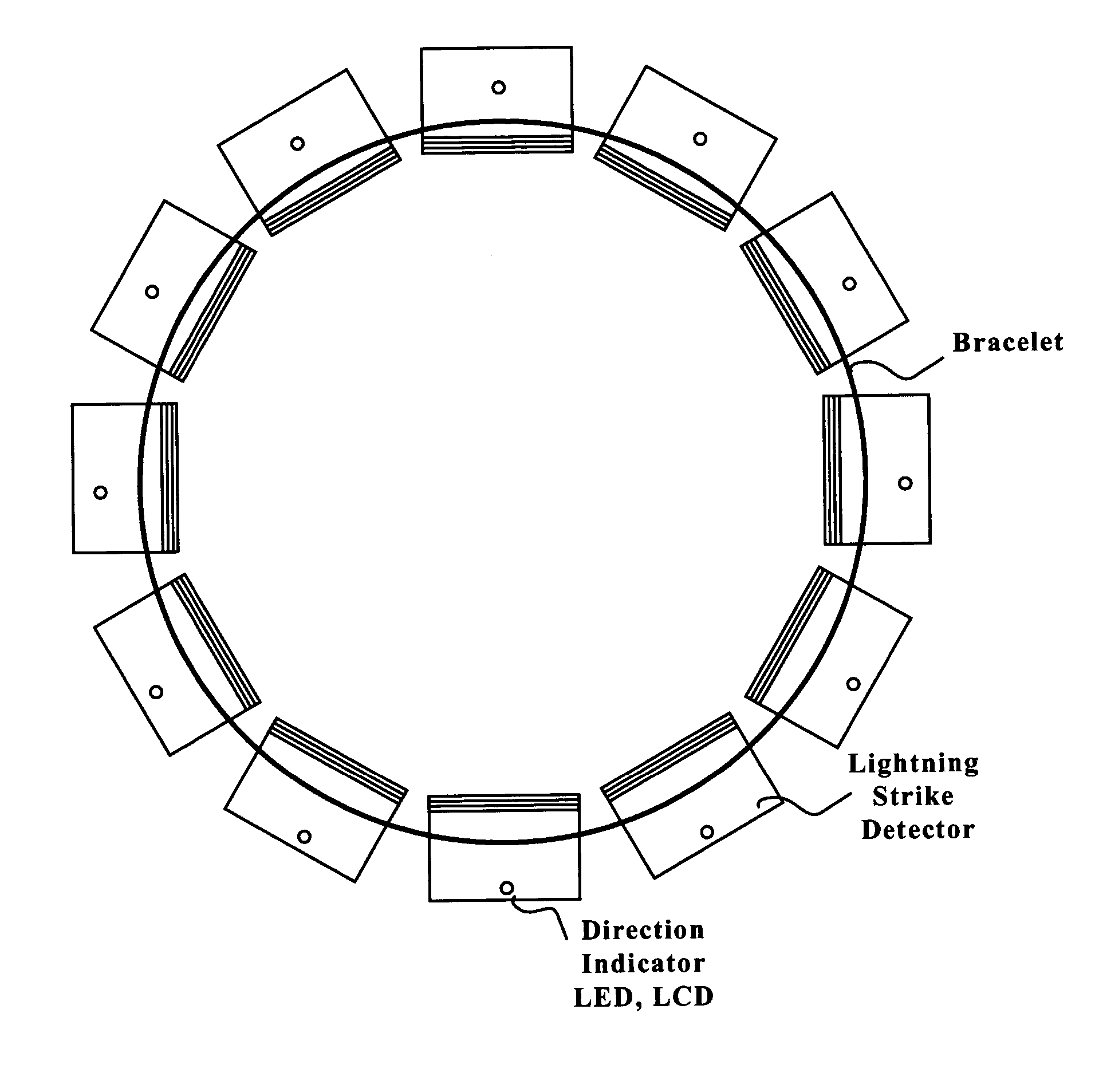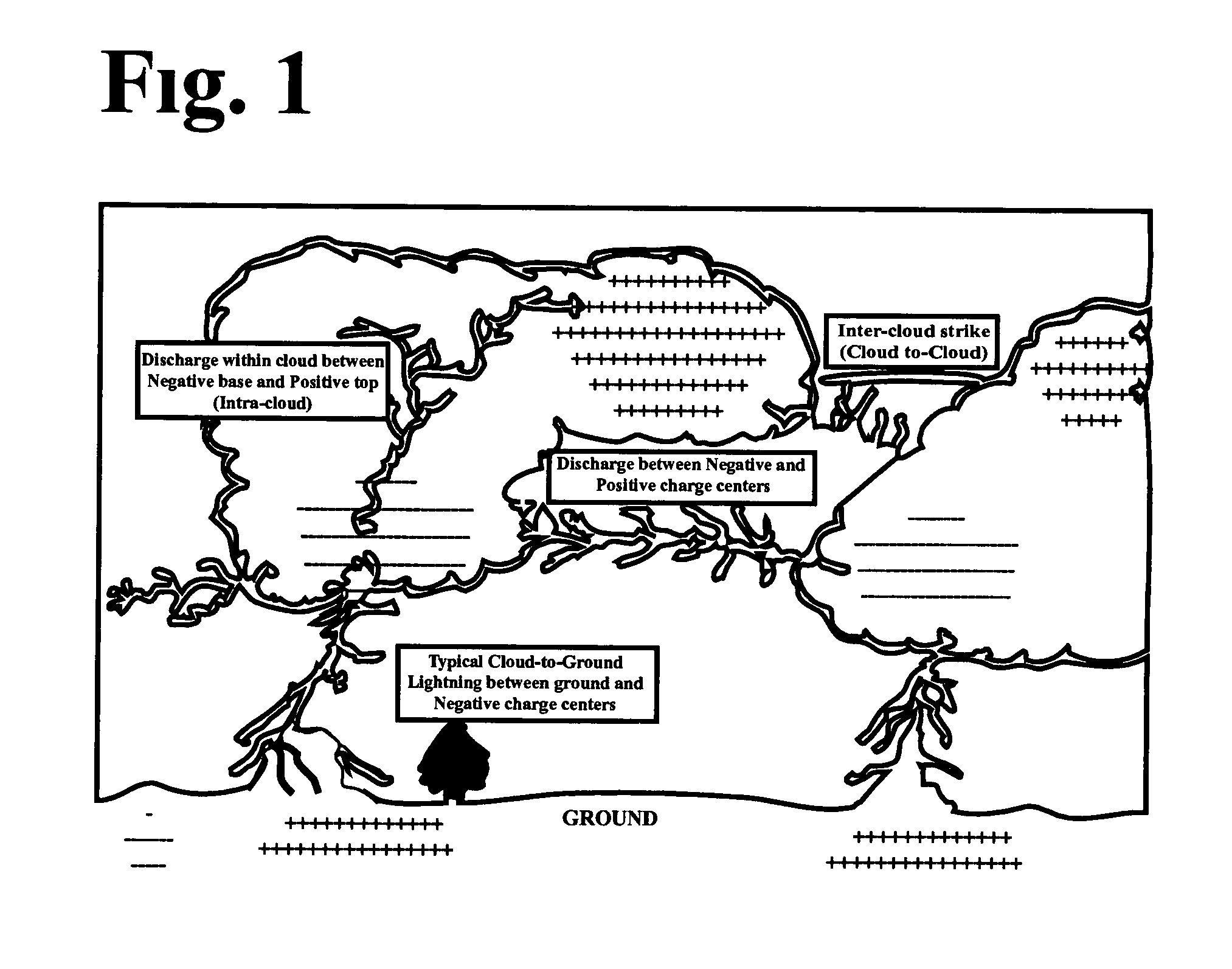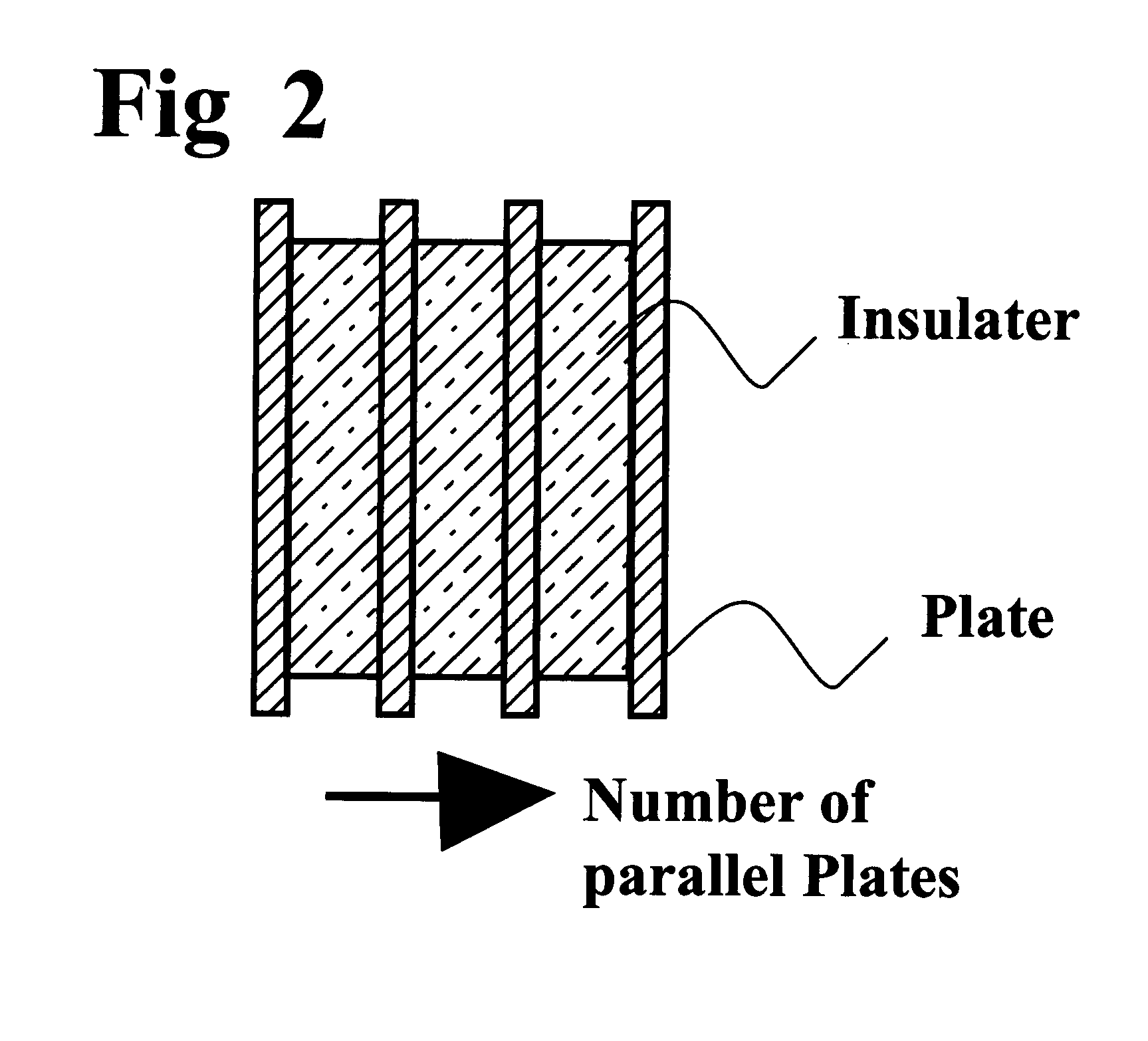Lightning strike hazard detector
a technology of hazard detector and lightning strike, which is applied in the field of electrostatic monitoring devices, can solve the problems of not being adapted to wear by users, unable to detect imminent lightning strikes, and inability to predict lightning hazard potential, etc., and achieves accurate and fast action, high reliability, and sufficient warning time
- Summary
- Abstract
- Description
- Claims
- Application Information
AI Technical Summary
Benefits of technology
Problems solved by technology
Method used
Image
Examples
Embodiment Construction
[0031] Lightning strikes people involved in outdoor recreational activities, generally on an overcast day. It strikes the ground many thousands of time each year, predominantly in the summer months, and each year approximately 100 people are killed by lightning in the United States and many more (500 or so) survive the strike but may suffer serious injuries such as burns, paralysis, etc. It is one of the most serious weather-related causes of death and injury in the country. A thunderstorm may approach with little warning and sometimes lightning strikes when no storm is immediately apparent.
[0032] It could prove to be highly advantageous for individuals engaged in outdoor activities to have a device which could be worn unobtrusively on the body, like a wristwatch, and would give the wearer advance warning of an impending lightning strike. This would be valuable to people engaged in sports such as golfing, hiking, fishing, as well as many other outdoor activities such as farming, et...
PUM
 Login to View More
Login to View More Abstract
Description
Claims
Application Information
 Login to View More
Login to View More - R&D
- Intellectual Property
- Life Sciences
- Materials
- Tech Scout
- Unparalleled Data Quality
- Higher Quality Content
- 60% Fewer Hallucinations
Browse by: Latest US Patents, China's latest patents, Technical Efficacy Thesaurus, Application Domain, Technology Topic, Popular Technical Reports.
© 2025 PatSnap. All rights reserved.Legal|Privacy policy|Modern Slavery Act Transparency Statement|Sitemap|About US| Contact US: help@patsnap.com



